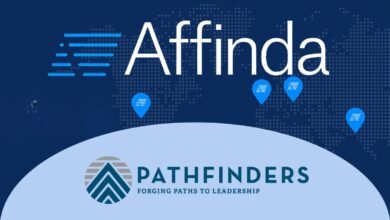Australia’s AI Adoption Outpacing Strategy, Warns Lucid

▼ Summary
– 80% of Australian workers use AI tools, but 49% of businesses have only partially or not integrated AI into workflows, showing a disconnect between employee adoption and leadership strategy.
– Australian workers are optimistic about AI, with 82% expecting time savings and 47% already reporting productivity gains, yet only 46% of businesses see positive ROI from AI investments.
– Over half (53%) of employees self-educate on AI through independent tool use, leading to fragmented adoption, with 28% of organizations describing AI efforts as “ad-hoc.”
– A lack of clear AI strategy is evident, as 45% of workers say their organization’s AI strategy is only somewhat aligned with operational capabilities, contributing to over half of AI projects failing to deliver positive ROI.
– Lucid Software is launching new AI capabilities, accelerators, and integrations to help organizations streamline workflows, align strategy, and overcome barriers to AI adoption for measurable business impact.
A significant gap exists in Australia between the widespread use of artificial intelligence tools by employees and the strategic implementation of these technologies by businesses. New research highlights that while 80% of Australian workers are actively using AI-powered tools, nearly half of all businesses have only partially integrated or have not integrated AI into their core workflows at all. This disconnect points to a critical strategic shortfall at the organizational level.
Employees across the country are enthusiastically embracing AI, with a strong majority believing it saves them valuable time and almost half already reporting tangible productivity gains. The primary challenge for companies is not a reluctance from their staff but a failure to channel this individual enthusiasm into a cohesive, company-wide strategy that delivers meaningful business results. Consequently, a mere 46% of Australian businesses report achieving a positive return on their AI investments, underscoring the financial impact of this strategic misalignment.
The research identifies two major risk areas stemming from this situation. First, there is a trend of employee-led adoption, where over half of the workforce is self-educating and experimenting with AI tools independently. While this demonstrates initiative, it leads to a fragmented and ad-hoc approach to AI, with more than a quarter of organizations describing their efforts as such. Second, the problem of unclear return on investment is pervasive. With the majority of AI projects failing to deliver a positive ROI, confidence in the technology wanes, a situation worsened by the fact that 45% of workers feel their company’s AI strategy is only somewhat aligned with its actual operational capabilities.
To address these challenges, a new suite of intelligent capabilities has been announced. This includes an integrated AI platform designed to help teams generate diagrams, organize complex ideas, and summarize documents, effectively transforming scattered AI use into streamlined, efficient workflows. Enhanced accelerators for business processes, cloud, and agility provide the foundational structure companies need to scale their AI initiatives effectively. For instance, a dedicated Process Accelerator centralizes all process documentation into searchable repositories, a vital function given that only 48% of Australian organizations have formal procedures for updating their documentation.
Furthermore, new robust integrations with major platforms like Google, Atlassian, and Microsoft allow teams to connect disparate data sources, creating a single, reliable source of truth. This helps to close the readiness gap caused by fragmented and legacy systems. By simplifying complex documentation, aligning strategic goals with practical execution, and providing the tools for seamless integration, this approach is designed to help organizations overcome traditional barriers. The ultimate goal is to ensure that Australian businesses can finally unlock the measurable, lasting impact that AI promises.
(Source: ITWire Australia)





